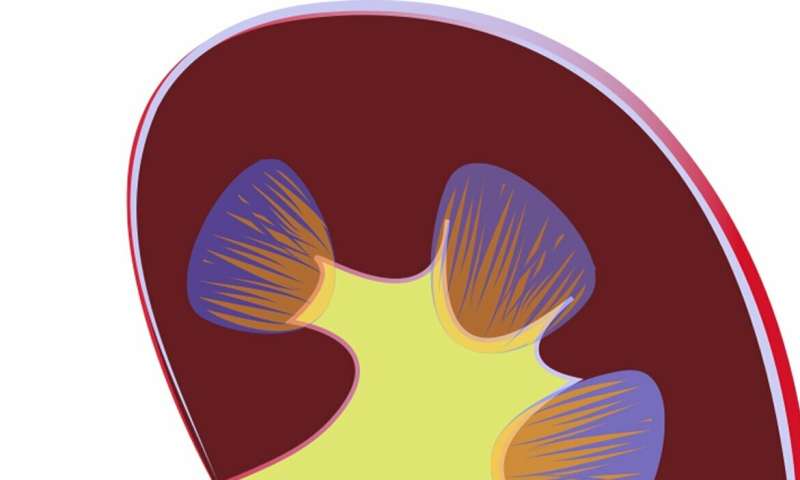Credit: CC0 Public Domain
Individuals with kidney failure who receive dialysis treatments in clinics (called in-center dialysis) are especially vulnerable to COVID-19, with death rates reported at over 20% in recent studies; however, there has been a dearth of information specific to patients who undergo dialysis sessions at home. A new study appearing in an upcoming issue of JASN indicates that these patients are similarly vulnerable to becoming infected with the virus that causes COVID-19, and from dying from the disease.
For the study, a team led by Caroline M. Hsu, MD and Eduardo Lacson Jr, MD, MPH (Tufts Medical Center and Dialysis Clinic, Inc.) examined information on all patients who received home dialysis through Dialysis Clinic, Inc. (a national not-for-profit dialysis provider serving approximately 2,000 home dialysis patients) from February 22, 2020 to December 31, 2020. The information was compared with data pertaining to patients who receive in-center dialysis.
The researchers found that 4.5% of home dialysis patients had COVID-19 between February and September, with Black race, Hispanic ethnicity, and long-term care facility residence being significant risk factors. From October to December, 6.4% of home dialysis patients had COVID-19.
"Early in the pandemic, patients receiving in-center dialysis treatments had higher rates of COVID-19 compared with those receiving home dialysis treatments; however, with increasing community spread of COVID-19, including into rural areas, more home dialysis patients became infected and infection rates increased," said Dr. Lacson. "In contrast, infection rates of COVID-19 among in-center patients declined slightly over time, which we believe reflected both greater testing capacity nationwide, and the implementation of rigorous infection control practices in healthcare settings, including nursing homes."
The researchers noted that patients undergoing dialysis, regardless of the site of dialysis treatment, exhibited higher rates of COVID-19 compared with the general population. "More importantly, their mortality rate of about 13%, while lower than it was earlier in the pandemic, remains devastatingly elevated," said Dr. Hsu. "We therefore strongly urge all dialysis patients to be vaccinated and continue to practice social distancing, mask wearing, and other public health precautions."
More information: "COVID-19 in Home Dialysis Patients: Epidemiology and Outcomes as Compared to In-Center Dialysis Patients," Journal of American Society of Nephrology, DOI: 10.1681/ASN.2020111653
Provided by American Society of Nephrology























